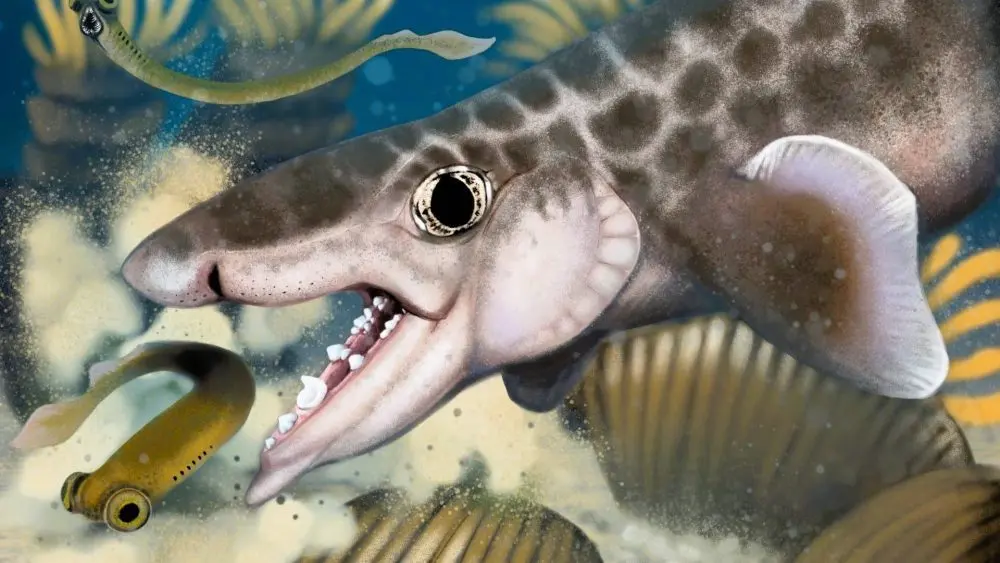
A newly identified species of ancient shark has been discovered at Mammoth Cave National Park, marking another significant addition to the park’s growing list of paleontological treasures.
Named Macadens olsoni, the species stood out to researchers because of its distinctive tooth whorl—a curved row of teeth likely used to crush mollusks, worms, and other soft-bodied sea life.
The fossil remains suggest this prehistoric shark grew to less than a foot in length and thrived in a warm, shallow sea that once covered the region approximately 340 to 335 million years ago.
The fossils were uncovered in the Ste. Genevieve Formation, a geologic layer rich with ancient marine life, including crinoids and corals. The species’ name pays homage both to the park itself—Macadens being a nod to Mammoth Cave—and to Rickard Olson, a retired park scientist who played a key role in documenting shark fossils at the site. Olson’s work was part of a recent Paleontological Resource Inventory that brought national attention to the cave’s fossil record.
The research team behind the discovery included experts from the National Park Service Paleontology Program, Mammoth Cave National Park, and the Smithsonian Institution’s Paleobiology Department.
Alongside Macadens olsoni, researchers also examined another ancient shark species previously known as Helodus coxanus. That species has now been renamed Rotuladens, meaning “Wheel Tooth,” in reference to its similar dental structures.
The discovery of Macadens olsoni not only adds to the understanding of ancient marine ecosystems but also highlights the critical role national parks play in preserving natural history. Officials say the find offers new opportunities for education and scientific outreach.
For more on the paleontological discoveries at Mammoth Cave, visit the park’s online exhibit: Sharks, Fossils, and Caves: Secrets Revealed at Mammoth Cave.





